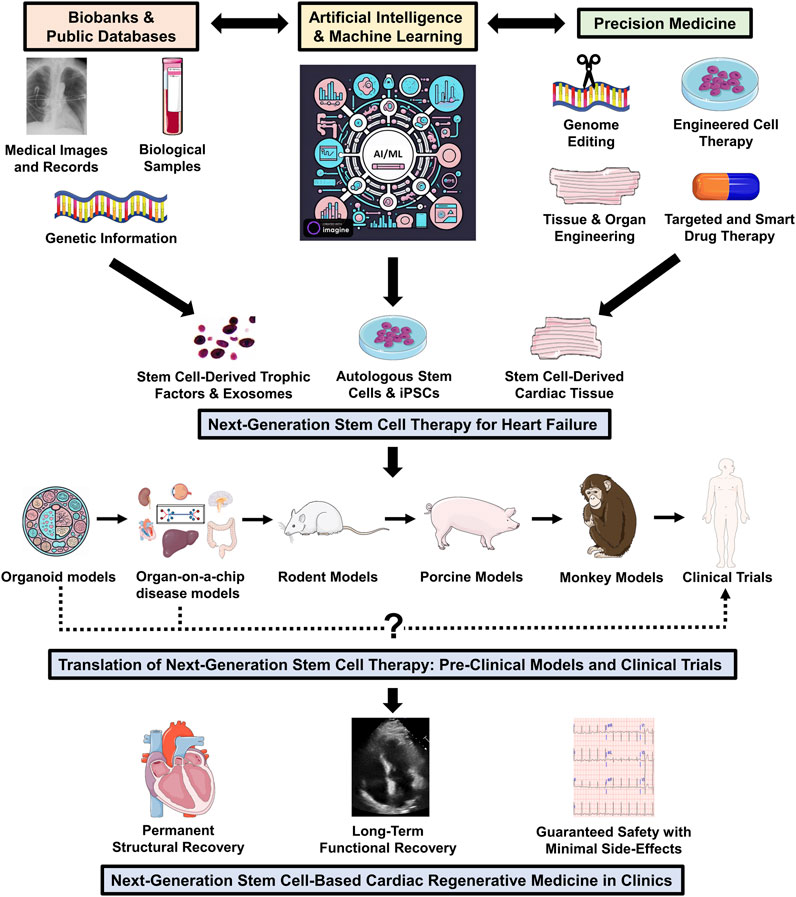Table of Contents
One is by changing right into new heart cells that replace damaged ones. This includes releasing different elements that stimulate tissue repair and regeneration without actually becoming brand-new cells.
The heartespecially after injuryisn't an inviting location. It's difficult for new cells to hold and even harder for the body to accept them. Also if the cells endure, they still need to link with the heart's electric system. Without the needed electrical coupling, the cells can not sync with the heart's natural rhythm.
Researchers are running medical trials to determine what sort of stem cells work best, how to deliver them securely, and exactly how to decrease the overall threats entailed. They are likewise dealing with solutions like using bioengineered supportive scaffolds or gene editing to enhance efficiency. Progress is being made on a number of fronts, and each research obtains us a little closer to making stem cell therapy a regular part of cardiac care.
There's also very early proof that this treatment might lower the threat of heart failure after a heart assault. Stem cell treatment isn't a remedy allnot yetbut it's directing us in the best instructions. As study continues we might quickly see a future where the heart can do what when seemed impossible: recover itself.

There are still difficulties, like cell survival and proper integration, development is encouraging. Future methods and innovations like bioengineering and gene modifying might unlock the full capacity of stem cell therapies, supplying hope for individuals taking care of heart disease. With heart stem cells, there's a possibility for your heart to recover itself, leading to better end results and a healthier future.
Regenerative support for Peripheral Artery Disease that uses stem cells
There is no treatment technique that straight reinforces the heart muscular tissue various other than stem cell treatment. Improvements at various degrees were determined in 87% of people receiving stem cell therapy for heart failing and ischemic heart conditions. Stem cells have the capacity to treat sick blood vessels when they touch the unwell blood vessel wall and they're also used to deal with cardiac arrest by turning right into heart muscular tissue cells if there is weakness in the heart muscle mass.
Therapy is carried out using endothelial, mesenchymal stem cells (obtained from the client's very own adipose cells or bone marrow) or fetal stem cells. Stem cells are carried out intravenously to the client.
Atherosclerosis, i.e. vessel tightness, is the main reason for complete stopping of blood flow or decreased blood flow. Numerous variables such as high cholesterol, hypertension, cigarette smoking cause development of plaques in the vessel wall gradually and loss of flexibility of the vessel. These plaques grow with time, tightening the capillary and can prevent appropriate quantity of blood from getting in the vessel (chronic).
Heart condition treatments depend on the type and intensity of the desease. Acute conditions such as heart strikes call for prompt clinical interventions to reduce heart damages.
There is no treatment approach that directly strengthens the heart muscle mass apart from stem cell therapy. Stem cells have the capability to treat sick capillaries when they touch the sick capillary wall surface. They're additionally used to treat heart failure by transforming right into heart muscle cells if there is weak point in the heart muscle mass.
Does stem cell therapy support Heart Failure and what patients are saying
They accelerate the treatment of heart muscular tissue swelling and inflammation. Endothelial stem cells (dealing with blood vessels) are made use of for vessel wall surfaces. These stem cells are mostly stemmed from bone marrow. However, mesenchymal or fetal stem cells are made use of with each other to deal with various other elements impacting the condition. This way, the heart muscle, the basic autoimmune system and various other variables are dealt with.

The number of cells to be carried out is established according to the age and weight of the person. Therapy is executed making use of endothelial, mesenchymal stem cells (originated from the individual's very own adipose tissue or bone marrow) or fetal stem cells. The decision is made according to the client's problem.
It enhances within a few hours after heart is damaged and remains in such levels for approximately 2 weeks. CK-MB - an unique kind of Creatine Kinase enzyme, which is mainly discovered in heart muscle. This enzyme raises when the heart muscle cells are harmed. Myoglobin - is a healthy protein that is released right into the blood when the heart or other skeletal muscular tissue is hurt.
Navigation
Latest Posts
Stem cell injections for Arrhythmias — what to expect
Can stem cells help with High Blood Pressure and what patients are saying
Leading providers of stem cell therapy focused on Heart Disease